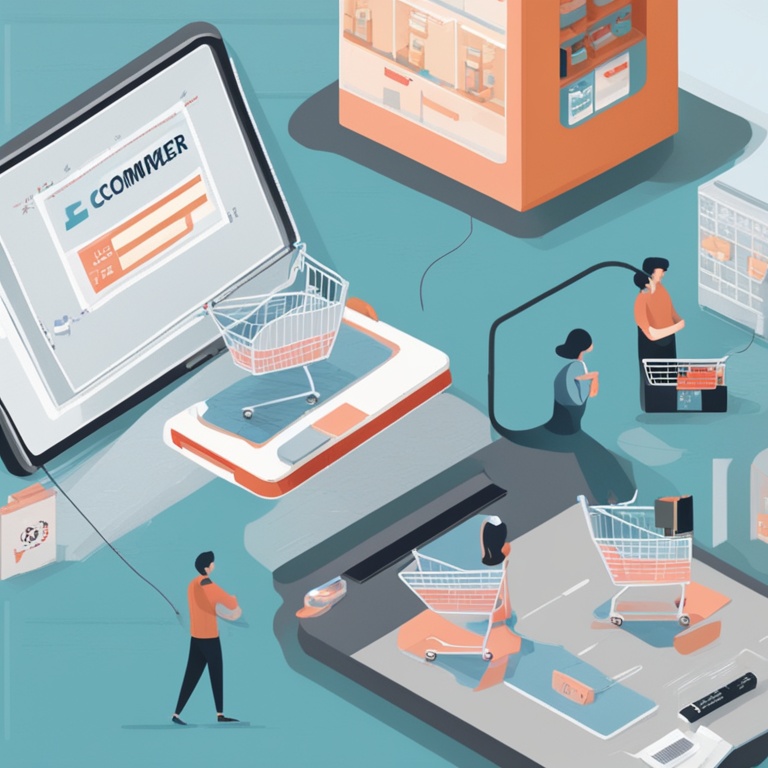

Hey there, fellow e-commerce enthusiasts! Today, we're going to dive deep into the exciting world of cross-border e-commerce and explore how we can unleash the power of AI to analyze competitor data. It's a game-changer, and I can't wait to share all the juicy details with you!
Understanding the Cross-border E-commerce Landscape
Cross-border e-commerce has been booming in recent years. With the increasing globalization and the ease of online shopping, consumers are no longer limited to buying products from local stores. They can now access a vast array of goods from all over the world with just a few clicks. This has opened up huge opportunities for businesses to expand their reach and tap into new markets.
However, with great opportunities come great challenges. The cross-border e-commerce space is highly competitive. There are numerous players vying for the attention of consumers, both big and small. To succeed in this cutthroat environment, it's crucial to have a clear understanding of your competitors and what they're up to.
That's where analyzing competitor data comes in. By gathering and analyzing information about your competitors, you can identify their strengths and weaknesses, spot emerging trends, and find ways to differentiate your business. But doing this manually can be a daunting and time-consuming task. This is where AI steps in to save the day!
The Power of AI in Analyzing Competitor Data
AI is revolutionizing the way we do business, and analyzing competitor data is no exception. With its advanced algorithms and machine learning capabilities, AI can process vast amounts of data in a fraction of the time it would take a human to do the same.
One of the key advantages of using AI to analyze competitor data is its ability to handle unstructured data. In the world of e-commerce, competitor data comes in many forms, such as product descriptions, customer reviews, social media posts, and website analytics. Much of this data is unstructured, meaning it doesn't fit neatly into a traditional database format. AI can analyze this unstructured data and extract valuable insights that would otherwise be hidden.
For example, AI can analyze customer reviews of your competitors' products to identify common complaints or areas of satisfaction. This information can then be used to improve your own products or services. It can also analyze social media posts to gauge the popularity of your competitors' marketing campaigns and identify trends in consumer sentiment.
Another powerful aspect of AI is its predictive capabilities. By analyzing historical data about your competitors, AI can predict their future actions and strategies. This gives you a head start in planning your own business moves. For instance, if AI predicts that a competitor is likely to launch a new product line in the near future, you can start preparing your own response, whether it's developing a competing product or adjusting your marketing strategy.
AI can also perform sentiment analysis on competitor-related data. It can determine whether the overall sentiment towards a competitor is positive, negative, or neutral. This can help you understand how consumers perceive your competitors and where you might have an advantage in terms of brand image.
Steps to Unleash the Power of AI for Competitor Data Analysis in Cross-border E-commerce
Now that we've seen the amazing potential of AI in analyzing competitor data, let's talk about how you can actually get started with it in the context of cross-border e-commerce.
1. Define Your Objectives
The first step is to clearly define what you want to achieve by analyzing competitor data. Are you looking to improve your product features based on what your competitors are offering? Or perhaps you want to identify new market opportunities by seeing where your competitors are having success? Maybe you're interested in understanding how to better position your brand in comparison to your competitors. Whatever your goals are, writing them down will help you stay focused throughout the process.
2. Gather the Data
Once you've defined your objectives, it's time to gather the relevant data. This can include data from your competitors' websites, such as product details, pricing, and shipping information. You'll also want to collect data from social media platforms, like their posts, comments, and follower counts. Additionally, customer reviews from various e-commerce platforms are a valuable source of information. There are tools available that can help you automate the data gathering process to some extent, making it more efficient.
3. Choose the Right AI Tools
There are many AI tools and platforms out there that can assist you in analyzing competitor data. Some are more focused on text analysis, like natural language processing (NLP) tools that can handle customer reviews and social media posts. Others are better suited for analyzing numerical data, such as pricing trends and sales figures. Consider your specific needs and the type of data you have to choose the most appropriate AI tool. You may also need to experiment with different tools to find the one that works best for you.
4. Clean and Prepare the Data
Before feeding the data into the AI tool, it's essential to clean and prepare it. This involves removing any duplicate or irrelevant information, standardizing the format of the data, and dealing with missing values. A clean and well-prepared data set will ensure that the AI tool can analyze the data accurately and produce reliable insights.
5. Analyze the Data with AI
Now it's the exciting part! Feed the cleaned and prepared data into the chosen AI tool and let it do its magic. The AI tool will analyze the data according to the algorithms and techniques it employs. It may take some time depending on the amount of data and the complexity of the analysis, but once it's done, you'll be presented with a wealth of insights about your competitors.
6. Interpret and Act on the Insights
The final step is to interpret the insights generated by the AI analysis and take action based on them. For example, if the AI shows that your competitors are offering a particular feature that customers love but you don't have, you might consider adding that feature to your product. If it reveals that a competitor's marketing campaign is generating a lot of buzz but yours isn't, you could study their approach and adapt it to your own campaign. Remember, the insights are only valuable if you use them to make informed decisions and improve your business.
Overcoming Challenges in Using AI for Competitor Data Analysis
While using AI to analyze competitor data offers many benefits, it's not without its challenges. One of the main challenges is the cost associated with implementing AI solutions. Some AI tools and platforms can be quite expensive, especially for small and medium-sized businesses. However, there are also many affordable options available, and it's worth exploring different alternatives to find one that fits your budget.
Another challenge is the need for technical expertise. AI is a complex field, and using it effectively requires some understanding of the underlying technologies and algorithms. If you don't have in-house technical expertise, you may need to consider outsourcing or partnering with a company that specializes in AI. Or, you could invest in training your own staff to build up their skills in this area.
Data privacy and security are also important considerations. When gathering and analyzing competitor data, you need to ensure that you're doing so in a legal and ethical manner. Make sure you have the proper permissions to access the data and that you're protecting it from unauthorized access. This is especially crucial in the cross-border e-commerce context, where different countries may have different regulations regarding data privacy.
Finally, there's the challenge of keeping up with the rapid evolution of AI technology. AI is constantly evolving, and new algorithms and tools are being developed all the time. To stay competitive, you need to keep learning about the latest developments and be willing to adapt your approach to using AI for competitor data analysis accordingly.
Conclusion
In conclusion, unleashing the power of AI to analyze competitor data in cross-border e-commerce can give you a significant edge in the highly competitive marketplace. It allows you to gain deep insights into your competitors, identify opportunities for improvement, and make informed decisions to grow your business.
While there are challenges to overcome, such as cost, technical expertise, data privacy, and staying up-to-date with AI technology, the rewards are well worth the effort. By following the steps we've outlined and being aware of the challenges, you can start harnessing the power of AI to analyze competitor data and take your cross-border e-commerce business to the next level.
So, what are you waiting for? Dive in and start exploring the amazing world of AI-powered competitor data analysis in cross-border e-commerce today!